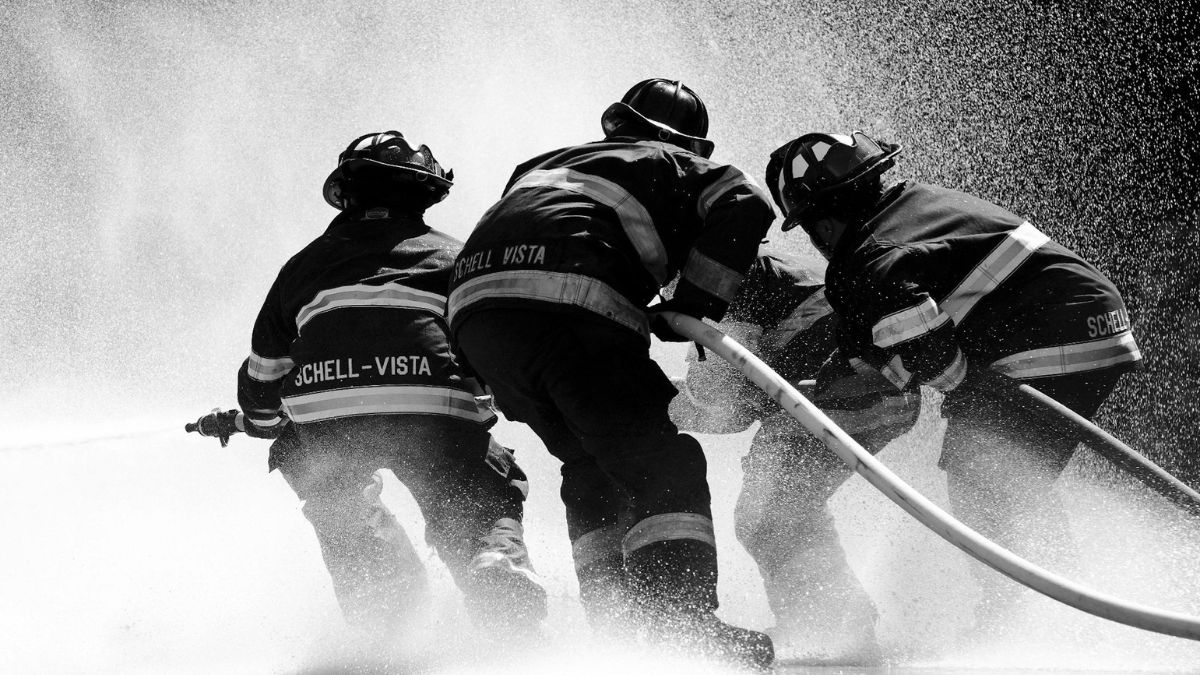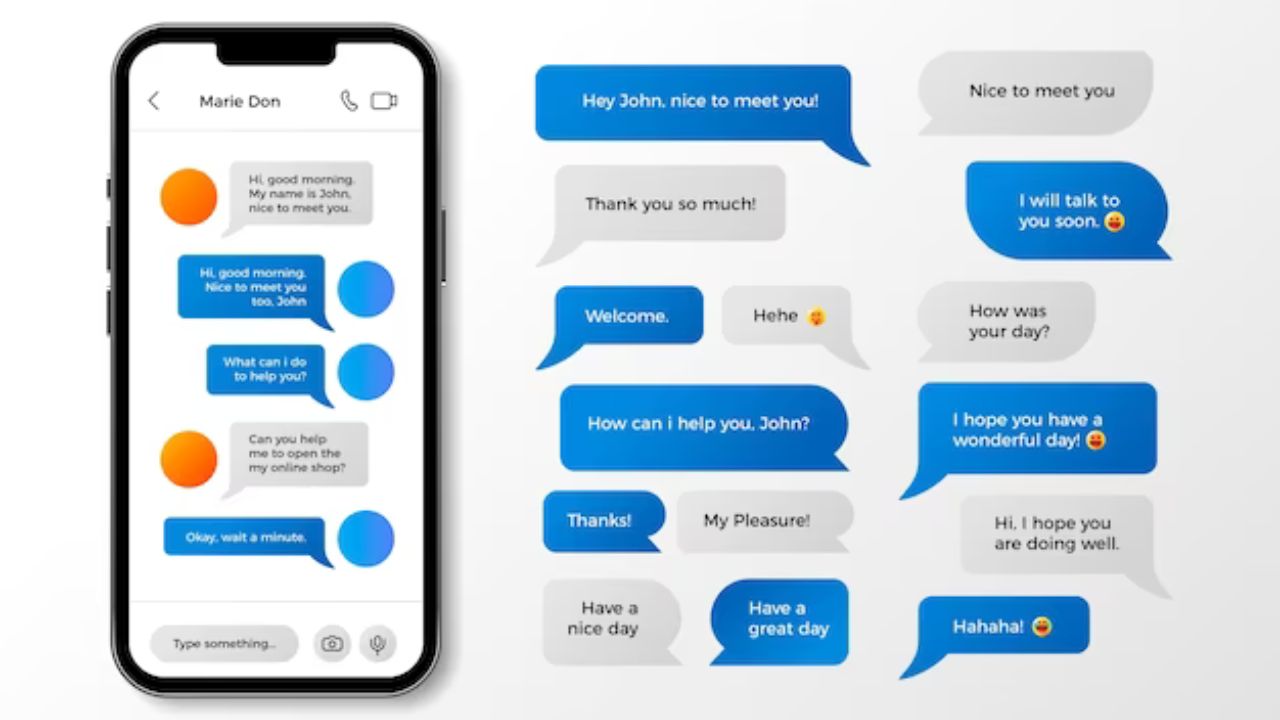LAW
Fighting Fires, Facing Risks: The Health Impact of AFFF Exposure on Firefighters

Firefighters are renowned for their courage, stepping into the line of fire to protect lives and property. However, a hidden danger lurks in their arsenal beyond the flames they bravely battle: Aqueous Film-Forming Foam (AFFF).
While effective in extinguishing hazardous fires, AFFF contains toxic compounds that pose serious health risks to firefighters. This article explores the profound impact of AFFF exposure on firefighter health, shedding light on the risks they face beyond the blaze.
Understanding AFFF
AFFF is a firefighting agent that suppresses fires involving flammable liquids such as gasoline, oil, and jet fuel. It creates a blanket-like film over the fuel, cutting off the oxygen supply and extinguishing the fire.
AFFF effectively combatting such fires has become a staple in worldwide firefighting operations. A recent study from the U.S. Naval Research Laboratory examined the effectiveness of AFFF. The study found that most live fuel fires can be extinguished using AFFF in less than 60 seconds. This was 1.5 to 2 times less than AFFF’s closest alternative, Fluorine-Free Foam (F3).
Health Risks Associated with AFFF Exposure
Despite its efficacy in fire suppression, AFFF contains per- and polyfluoroalkyl substances (PFAS). According to an NCBI article, AFFF contains around 1-5% PFAS.
PFAS are a group of synthetic chemicals known for their persistence in the environment and potential adverse health effects. PFAS compounds, including perfluorooctanoic acid (PFOA) and perfluorooctane sulfonate (PFOS), have been linked to various health problems.
Here are some of the health problems associated with AFFF foam exposure.
Cancer Risk
One of the most alarming health concerns associated with AFFF exposure is the elevated risk of cancer among firefighters. Studies have indicated a correlation between PFAS exposure and several types of cancer, including prostate, kidney, testicular, and pancreatic cancer.
For instance, one study from JAAD Journal shows the increased risk of melanoma in firefighters due to AFFF exposure. The study concludes that firefighters are at an increased risk of getting melanoma compared to police. This is especially true for those in the older age bracket of 55 to 74 years.
According to TorHoerman Law, this increased risk of cancer has also led to the rise of AFFF foam lawsuits. Many firefighters with AFFF exposure who developed any form of cancer are filing lawsuits against manufacturers. They allege that the manufacturers knew or should have known about the potential problem.
Therefore, they are seeking compensation. The settlement amount for an AFFF foam lawsuit has not yet been decided. However, it can vary widely based on several factors. For instance, the severity of the condition, the longevity of exposure, financial damages, etc., can all influence the settlement amount.
Reproductive and Developmental Effects
In addition to cancer risks, AFFF exposure has been linked to reproductive and developmental issues. Animal studies have provided evidence of reproductive toxicity associated with AFFF exposure.
These studies have shown reduced fertility, delayed puberty, and adverse pregnancy outcomes in animals exposed to PFAS compounds present in AFFF. Furthermore, evidence suggests that PFAS exposure can disrupt hormone signaling pathways involved in reproductive and developmental processes.
In humans, epidemiological studies have also suggested potential links between AFFF exposure and adverse reproductive outcomes. These include reduced fertility, miscarriages, and birth defects. Additionally, there is concern about the effects of PFAS exposure on fetal development. These chemicals can cross the placental barrier and affect the developing fetus.
Female firefighters exposed to PFAS compounds may experience complications during pregnancy, including preterm birth, low birth weight, and preeclampsia. Furthermore, PFAS exposure in males has been associated with reduced sperm quality and fertility. This has raised concerns about the long-term reproductive health of firefighters and their offspring.
Immune System Dysfunction
Studies have indicated that PFAS compounds can accumulate in the human body and persist for long periods. Once absorbed, these chemicals can disrupt various biological processes, including those in immune system regulation.
A study from BMC Journal shows that PFAS exposure has been associated with alterations in cytokine production. Cytokines are crucial for coordinating immune responses. Additionally, PFAS can interfere with the function of immune cells, such as T cells, B cells, and natural killer cells. Thus, it can compromise the body’s defense against pathogens and foreign substances.
Furthermore, PFAS-induced immune system dysfunction may exacerbate inflammatory conditions and increase infection susceptibility. Animal studies have demonstrated that exposure to PFAS can impair vaccine responses, leading to reduced efficacy of immunization.
Challenges in Regulation and Mitigation
Despite growing evidence of the health risks posed by AFFF exposure, regulating and mitigating these hazards remain significant challenges. The widespread use of AFFF in firefighting operations and its persistence in the environment complicates efforts to minimize exposure and prevent adverse health outcomes.
Furthermore, the lack of comprehensive regulations governing PFAS compounds has hindered effective progress in addressing the issue. While some jurisdictions have implemented measures to restrict the use of AFFF containing PFAS, inconsistencies in regulations across regions pose challenges for firefighters.
According to the NFPA Journal, the US military plans to stop using AFFF by October 2024. Moreover, the Federal Aviation Administration plans to follow suit at thousands of nationwide airports. In 2021, almost 15 places banned AFFF use, and legislation is pending in at least five other states to do the same.
Frequently Asked Questions
What Are the Symptoms of AFFF Exposure?
Common symptoms of AFFF exposure include respiratory issues, skin irritation, gastrointestinal problems, headaches, dizziness, and more. These symptoms can arise quickly or may take time to show after AFFF exposure.
What Are the Environmental Effects of AFFF Use?
The use of Aqueous Film Forming Foam (AFFF) can have several environmental effects, primarily due to PFAS chemicals. Some environmental effects include groundwater contamination, surface water contamination, soil contamination, bioaccumulation, and impact on wildlife.
Are There Any Alternatives for AFFF?
There are many alternatives for AFFF, including F3 foams, protein-based foams, high-expansion foams, and more. However, these alternatives are not as effective as AFFF. Research is ongoing to make these alternatives more effective in eliminating the use of AFFF.
To conclude, fighting fires is inherently risky, but the dangers extend beyond the immediate hazards of flames and smoke. AFFF exposure poses significant health risks to firefighters, including an elevated risk of cancer, reproductive and developmental issues, and immune system dysfunction.
Addressing these risks requires concerted efforts from firefighting agencies, regulatory bodies, and policymakers. As our brave firefighters continue to protect our communities, we must prioritize their well-being.
LAW
The Importance of Legal Expertise in Real Estate: Insights from openhouseperth.net Lawyer

openhouseperth.net Lawyer :Welcome to the world of real estate, where every property transaction is a unique journey filled with excitement and potential pitfalls. In this fast-paced industry, having a legal expert by your side can make all the difference between a smooth deal and a costly mistake. Today, we dive into the importance of legal expertise in real estate transactions, exploring insights from the knowledgeable team at openhouseperth.net Lawyer. Let’s unravel the complexities and unveil the benefits of having a skilled lawyer navigate you through the intricate landscape of real estate law.
Benefits of Hiring a Lawyer for Real Estate Transactions
When it comes to real estate transactions, hiring a lawyer can offer invaluable benefits. A qualified real estate attorney can guide you through the complex legal processes involved in buying or selling property. They possess the expertise to review contracts, negotiate terms, and ensure that your rights are protected throughout the transaction.
One of the key advantages of having a lawyer by your side is their ability to identify potential issues before they escalate into major problems. Whether it’s title discrepancies, zoning regulations, or undisclosed liens on the property, an experienced attorney can spot red flags that may impact your investment.
Moreover, a lawyer can provide crucial advice on matters such as financing options, tax implications, and compliance with local laws and regulations. Their knowledge of real estate law ensures that all legal requirements are met during the transaction process.
By entrusting your real estate transaction to a skilled attorney, you gain peace of mind knowing that you have a dedicated advocate looking out for your best interests every step of the way.
Common Legal Issues in Real Estate
When it comes to real estate transactions, there are common legal issues that can arise and complicate the process. One of the main concerns is unclear property titles, which can lead to disputes over ownership rights. Another issue is zoning violations, where properties may not comply with local regulations and restrictions.
Additionally, contract discrepancies often occur due to misunderstandings or errors in drafting agreements. Boundary disputes between neighbors can also escalate if not handled properly by legal experts. Environmental concerns such as contamination or hazardous materials on a property pose potential liabilities for buyers.
Furthermore, financing challenges like mortgage issues or loan defaults can impact the successful completion of a real estate deal. It’s crucial to address these legal matters promptly and accurately with the guidance of a knowledgeable real estate lawyer to avoid costly repercussions down the line.
The Role of a Real Estate Lawyer
When it comes to navigating the complex world of real estate transactions, having a knowledgeable legal expert by your side can make all the difference. A real estate lawyer plays a crucial role in ensuring that all aspects of a property deal adhere to local laws and regulations.
One key responsibility of a real estate lawyer is conducting thorough due diligence on the property being bought or sold. This includes reviewing title documents, survey reports, and zoning ordinances to uncover any potential issues that could impact the transaction.
Additionally, a real estate lawyer is instrumental in drafting and reviewing contracts to protect their client’s interests. They ensure that all terms and conditions are fair and legally binding before any agreements are signed.
In case of disputes or complications during the buying or selling process, a skilled real estate lawyer can provide valuable guidance and representation. Whether it’s negotiating with the other party or resolving conflicts through mediation or litigation, their expertise can help clients navigate challenging situations effectively.
Having a competent real estate lawyer on your side brings peace of mind knowing that you have someone who understands the intricacies of property law advocating for your best interests throughout the transaction.
Tips for Choosing the Right Real Estate Lawyer
When it comes to choosing the right real estate lawyer, there are a few key factors to consider.
Look for a lawyer with experience in real estate law specifically. This expertise can make all the difference when navigating complex legal issues related to property transactions.
Additionally, consider seeking recommendations from trusted sources such as friends, family members, or real estate professionals. Personal referrals can often lead you to skilled and reliable lawyers.
It’s also crucial to meet with potential lawyers for an initial consultation. Use this opportunity to ask questions about their background, approach to cases, and communication style.
Don’t forget to inquire about their fees and billing structure upfront. Understanding the costs involved will help you avoid any surprises down the road.
Trust your instincts when making a decision. Choose a lawyer who not only has the necessary skills but also makes you feel comfortable and confident in their abilities.
Case Studies: Examples of How a Lawyer Can Help in Real Estate Matters
Imagine a scenario where a buyer discovers undisclosed structural issues in their newly purchased home. Without a real estate lawyer, navigating this situation could be overwhelming and costly. The lawyer can review the contract to determine if the seller breached any terms related to property disclosure.
In another case, during a commercial real estate transaction, an environmental assessment reveals contamination on the property. A skilled attorney can negotiate with the seller for necessary cleanup or compensation before closing the deal.
Furthermore, in a dispute over property boundaries between neighbors, legal expertise is essential. A real estate lawyer can conduct research, interpret deeds and surveys, and represent their client’s interests in resolving the issue amicably or through litigation if needed.
These examples demonstrate how having a knowledgeable lawyer by your side can protect your rights and investments in various real estate matters.
Conclusion: The Value of Legal Expertise in Real Estate
Choosing to work with a legal expert in real estate can provide invaluable support and guidance throughout the complex process of buying or selling property. From ensuring all contracts are legally sound to navigating any potential issues that may arise, a real estate lawyer plays a crucial role in safeguarding your interests.
By enlisting the help of a knowledgeable and experienced real estate lawyer, you can gain peace of mind knowing that your transaction is being handled with care and attention to detail. Their expertise can help prevent costly mistakes, protect you from legal liabilities, and ultimately streamline the entire process.
When it comes to such significant investments as real estate transactions, having a legal expert on your side is not just beneficial – it’s essential. So, next time you find yourself dealing with property matters, consider reaching out to a reputable real estate lawyer who can provide you with the necessary insights and assistance every step of the way.
LAW
Unpacking the C.W. Park USC Lawsuit: What You Need to Know

C.W. Park USC Lawsuit: Step into the realm of higher education drama as we delve into the unfolding saga of the C.W. Park USC Lawsuit. Buckle up as we unpack the allegations, key players, and potential impacts in this gripping legal battle that has sent shockwaves through academia. Let’s navigate through the twists and turns of this controversy to uncover what you need to know about this headline-making case!
Background on Park’s Allegations Against USC
In delving into the background of the C.W. Park USC lawsuit, it is crucial to understand the allegations made by Park against the prestigious university. At the heart of this legal battle are claims of discrimination and retaliation that have sparked controversy within academic circles.
Park, a former professor at USC’s Marshall School of Business, alleges that he faced discriminatory treatment based on his race and national origin. These accusations shed light on broader issues surrounding diversity and inclusion within higher education institutions.
The allegations against USC have brought attention to questions about institutional culture and practices that may perpetuate inequities in academia. As the case unfolds, it raises important discussions about accountability and transparency in addressing discrimination allegations within educational settings.
Understanding Park’s allegations provides insight into the complexities of navigating diversity challenges in educational environments like USC. The outcome of this lawsuit will undoubtedly have far-reaching implications for both the university and the wider academic community.
Key Players in the Case
In the high-profile C.W. Park USC Lawsuit, there are several key players whose roles have come under scrutiny. Central to the case is Dr. Chonwoo Park himself, a former USC employee who has made serious allegations against the university. His claims have sparked a legal battle that has garnered significant attention.
On the other side of the dispute stands USC, one of the most prestigious universities in the United States. The institution’s response and actions in light of these allegations will undoubtedly shape its reputation and standing within higher education circles.
Legal representatives for both parties play a crucial role in navigating this complex legal terrain. Their strategies and arguments will heavily influence the outcome of this contentious lawsuit.
Additionally, stakeholders such as students, faculty members, and alumni also hold a vested interest in how this case unfolds. The implications could reverberate far beyond just those directly involved in the proceedings.
Timeline of Events Leading up to the Lawsuit
In understanding the C.W. Park USC Lawsuit, delving into the timeline of events leading up to the legal battle provides crucial context. It all began when Park, a former assistant professor at USC’s School of Social Work, raised concerns about alleged discriminatory practices within the department.
These initial grievances eventually escalated as Park claimed that he faced retaliation for speaking out against what he perceived as unfair treatment. As tensions mounted between Park and USC administrators, a series of disputes unfolded over academic freedom and professional conduct.
The situation reached a boiling point when Park filed a lawsuit against USC, accusing the institution of discrimination based on his Korean heritage and ultimately seeking justice through legal channels. The unfolding events shed light on broader issues surrounding diversity, equity, and inclusion in academia.
Details of the Allegations and Evidence Presented
In the C.W. Park USC Lawsuit, detailed allegations have been made against the university regarding discrimination and retaliation. Park claims that he faced racial bias, harassment, and a hostile work environment while working at USC. The evidence presented includes emails, witness testimonies, and documentation of discriminatory practices within the institution.
Allegations range from unequal pay to being passed over for promotions based on race rather than merit. Numerous instances of derogatory comments and microaggressions have also been highlighted in the case. Additionally, there are reports of USC not taking appropriate action when complaints were raised by Park about his treatment.
The evidence paints a troubling picture of systemic issues within USC’s organizational culture that need to be addressed. As this legal battle unfolds, it sheds light on broader conversations around diversity, equity, and inclusion in higher education settings like universities.
Stay tuned for updates on how these details will impact the outcome of the lawsuit between C.W. Park and USC!
Reactions and Responses from USC and Other Parties Involved
When news of the C.W. Park USC lawsuit broke, reactions were swift and varied. The University of Southern California (USC) issued a statement expressing shock and emphasizing their commitment to upholding ethical standards. Other parties involved in the case maintained a more reserved stance, awaiting further developments before making public comments.
As the allegations against USC unfolded, discussions on social media platforms sparked debates among students, alumni, and the general public. Some expressed disappointment while others urged for transparency and accountability from the institution. Amidst these reactions, legal experts weighed in on the potential implications of the lawsuit on higher education institutions nationwide.
The responses from USC and other parties involved set the stage for what promises to be a complex legal battle with far-reaching consequences. For now, all eyes are on how this high-profile case will unfold in the coming months.
Impact on USC and Higher Education Institutions
The C.W. Park USC lawsuit has sent shockwaves through the higher education landscape, raising crucial questions about accountability and transparency within institutions like USC. The allegations have highlighted the potential power imbalances and issues of misconduct that can exist in academic settings.
This legal battle has not only put a spotlight on USC but also serves as a warning to other higher education institutions to prioritize ethical practices and ensure the safety and well-being of their students at all costs. It underscores the importance of taking swift action when confronted with allegations of misconduct or wrongdoing.
The impact extends beyond just USC; it reverberates throughout the entire higher education sector, prompting discussions around governance structures, compliance mechanisms, and cultural norms within academia. As institutions grapple with these challenges, they are forced to reflect on their own policies and procedures to prevent similar situations from arising in the future.
What This Means for Students and Prospective Students
For students and prospective students, the C.W. Park USC lawsuit brings to light important considerations when choosing an educational institution. It underscores the significance of transparency and accountability within higher education settings.
The allegations against USC serve as a reminder for individuals to research institutions thoroughly before committing to their academic journey. Students must be vigilant in understanding the values and practices upheld by universities they are considering.
This lawsuit may prompt a shift in how universities handle misconduct allegations, potentially leading to more stringent policies and procedures aimed at protecting student welfare. As a result, students may witness increased efforts by institutions to prioritize safety and integrity.
Prospective students should take note of how universities respond to such legal challenges, as it can speak volumes about their commitment to fostering a secure and ethical learning environment. By staying informed and asking critical questions, individuals can make well-informed decisions regarding their education amidst ongoing developments in this case.
Conclusion: The Ongoing Legal Battle and Its Potential Outcomes
As the C.W. Park USC lawsuit unfolds, it continues to draw attention and raise important questions about accountability and transparency within higher education institutions. The potential outcomes of this legal battle could have far-reaching implications for how universities handle allegations of misconduct and discrimination.
It is essential to monitor the developments in this case closely as they may set a precedent for future cases involving similar issues. The impact of the lawsuit on USC and other institutions remains to be seen, but one thing is certain – it has already sparked conversations about the power dynamics at play in academia.
The journey towards justice for Dr. Park and all parties involved is likely to be a complex and lengthy one. As more details come to light, it will be crucial for stakeholders in higher education to reflect on their policies and practices to ensure that they are fostering inclusive and equitable environments for all students, faculty, and staff members.
Stay tuned as we continue to follow this story closely and provide updates on any new developments that arise from the ongoing legal battle between C.W. Park and USC.
LAW
The Role of Negligence in California Wrongful Death Cases

Negligence plays a pivotal role in California wrongful death cases, serving as the legal basis for holding the responsible party accountable for their actions or inactions that led to the death of another person. In these cases, negligence refers to a failure to exercise reasonable care, resulting in harm or injury to another individual.
Establishing negligence is crucial for demonstrating liability and recovering compensation for the loss of a loved one. This article will explore the role of negligence in California wrongful death cases, including its elements, how it is proven, and its significance in seeking justice for the deceased and their surviving family members.
Elements of Negligence
The concept of negligence in situations involving wrongful death in the state of California is comprised of four essential components: duty of care, breach of duty, causation, and damages. The legal responsibility that persons have to behave reasonably and to prevent causing damage to other people is referred to as the duty of care. A person is said to have committed a breach of duty when they fail to fulfill this commitment by behaving in a manner that is either negligent or reckless.
By establishing the connection between the defendant’s breach of duty and the death of the victim, the concept of causation demonstrates that the defendant’s carelessness was the direct cause of the final result, which was deadly. Last but not least, damages are the losses that the surviving members of the victim’s family have endured as a consequence of the victim’s death. These losses include financial, emotional, and psychic trauma.
Proving Negligence
Proving negligence in a California wrongful death case requires presenting evidence that satisfies each element of the negligence claim. This evidence can include eyewitness testimony, medical records, accident reconstruction reports, expert testimony, and other relevant documentation. Eyewitnesses and experts can provide insights into the circumstances surrounding the incident and the actions of the parties involved.
Medical records can demonstrate the extent of the victim’s injuries and the cause of death. Accident reconstruction reports can help establish how the incident occurred and who was at fault. The plaintiff can build a strong negligence case by compiling and presenting this evidence.
Comparative Negligence
In some cases, more than one party can share responsibility for the wrongful death due to their negligent actions. California follows the doctrine of comparative negligence, which allows the court to apportion fault among multiple parties based on their degree of responsibility for the incident. Under comparative negligence, the plaintiff’s recovery can be reduced in proportion to their degree of fault.
However, they are still entitled to compensation as long as they are not primarily responsible for the incident. This legal principle ensures that each party bears responsibility for their actions and that fault is allocated fairly in wrongful death cases.
Significance in Seeking Justice with the Help of Lawyer
In cases of wrongful death in California, the significance of seeking justice cannot be overstated, and it often necessitates the expertise of a California wrongful death lawyer. These legal professionals play a pivotal role in advocating for the rights of surviving family members and holding negligent parties accountable for their actions.
By consulting with a wrongful death lawyer, families can navigate the complexities of the legal system with confidence and pursue the compensation they deserve for their loss. With their knowledge of relevant laws and experience in handling wrongful death cases, these lawyers serve as invaluable allies in the pursuit of justice. Ultimately, seeking the assistance of a wrongful death lawyer ensures that families have the support and representation needed to achieve closure and begin the healing process.
Conclusion
Negligence is a central concept in California wrongful death cases, providing the legal framework for establishing liability and seeking compensation for the loss of a loved one. By demonstrating that the defendant breached their duty of care, directly causing the victim’s death and resulting in damages to the surviving family members, plaintiffs can build a strong negligence case.
Understanding the elements of negligence, gathering compelling evidence, and navigating the legal process with the assistance of an experienced attorney are essential steps in pursuing justice in wrongful death cases. Through the pursuit of legal action, grieving families can hold negligent parties accountable and obtain the closure and financial support they need to move forward after a tragic loss.
-

 LOVE MESSAGES7 months ago
LOVE MESSAGES7 months agoSweet Love Messages for Her to Make Her Smile
-

 LOVE MESSAGES7 months ago
LOVE MESSAGES7 months ago100 Romantic Good Evening Messages For Her & Him
-

 LOVE MESSAGES7 months ago
LOVE MESSAGES7 months agoRomantic Love Messages For My Husband With Images
-

 LOVE MESSAGES7 months ago
LOVE MESSAGES7 months ago50 Just Checking on You Text Messages for Him & Her
-

 LOVE MESSAGES7 months ago
LOVE MESSAGES7 months agoSweet Love Messages For My Wife With Images
-

 LOVE MESSAGES7 months ago
LOVE MESSAGES7 months ago50 Cute Good Night Sweet Dreams Messages For Lovers
-

 LOVE MESSAGES7 months ago
LOVE MESSAGES7 months ago25 Romantic I Love You Messages for Her
-

 LOVE MESSAGES7 months ago
LOVE MESSAGES7 months agoLong Good Morning Messages to Make Her Fall in Love
